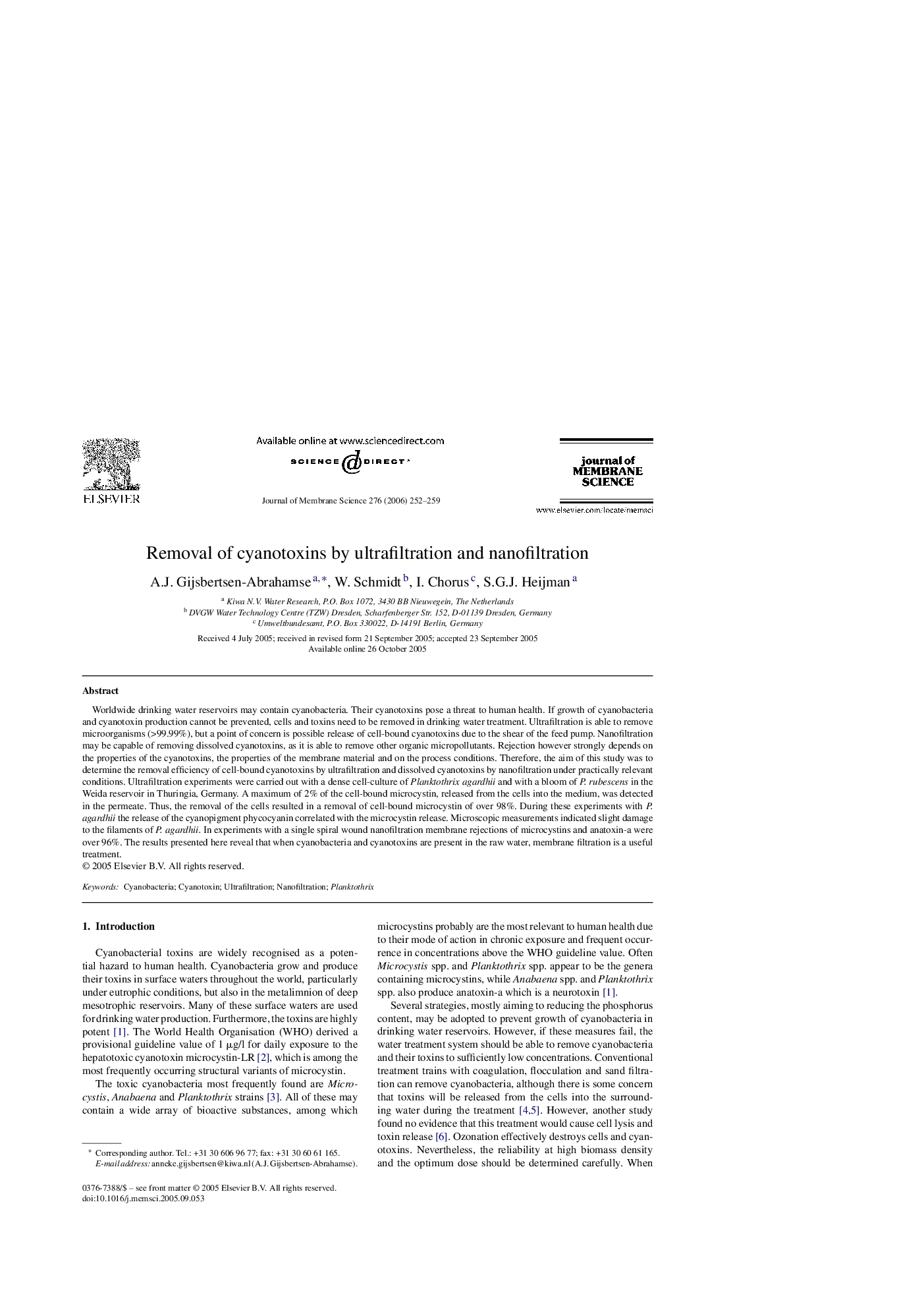| Article ID | Journal | Published Year | Pages | File Type |
|---|---|---|---|---|
| 639361 | Journal of Membrane Science | 2006 | 8 Pages |
Worldwide drinking water reservoirs may contain cyanobacteria. Their cyanotoxins pose a threat to human health. If growth of cyanobacteria and cyanotoxin production cannot be prevented, cells and toxins need to be removed in drinking water treatment. Ultrafiltration is able to remove microorganisms (>99.99%), but a point of concern is possible release of cell-bound cyanotoxins due to the shear of the feed pump. Nanofiltration may be capable of removing dissolved cyanotoxins, as it is able to remove other organic micropollutants. Rejection however strongly depends on the properties of the cyanotoxins, the properties of the membrane material and on the process conditions. Therefore, the aim of this study was to determine the removal efficiency of cell-bound cyanotoxins by ultrafiltration and dissolved cyanotoxins by nanofiltration under practically relevant conditions. Ultrafiltration experiments were carried out with a dense cell-culture of Planktothrix agardhii and with a bloom of P. rubescens in the Weida reservoir in Thuringia, Germany. A maximum of 2% of the cell-bound microcystin, released from the cells into the medium, was detected in the permeate. Thus, the removal of the cells resulted in a removal of cell-bound microcystin of over 98%. During these experiments with P. agardhii the release of the cyanopigment phycocyanin correlated with the microcystin release. Microscopic measurements indicated slight damage to the filaments of P. agardhii. In experiments with a single spiral wound nanofiltration membrane rejections of microcystins and anatoxin-a were over 96%. The results presented here reveal that when cyanobacteria and cyanotoxins are present in the raw water, membrane filtration is a useful treatment.
